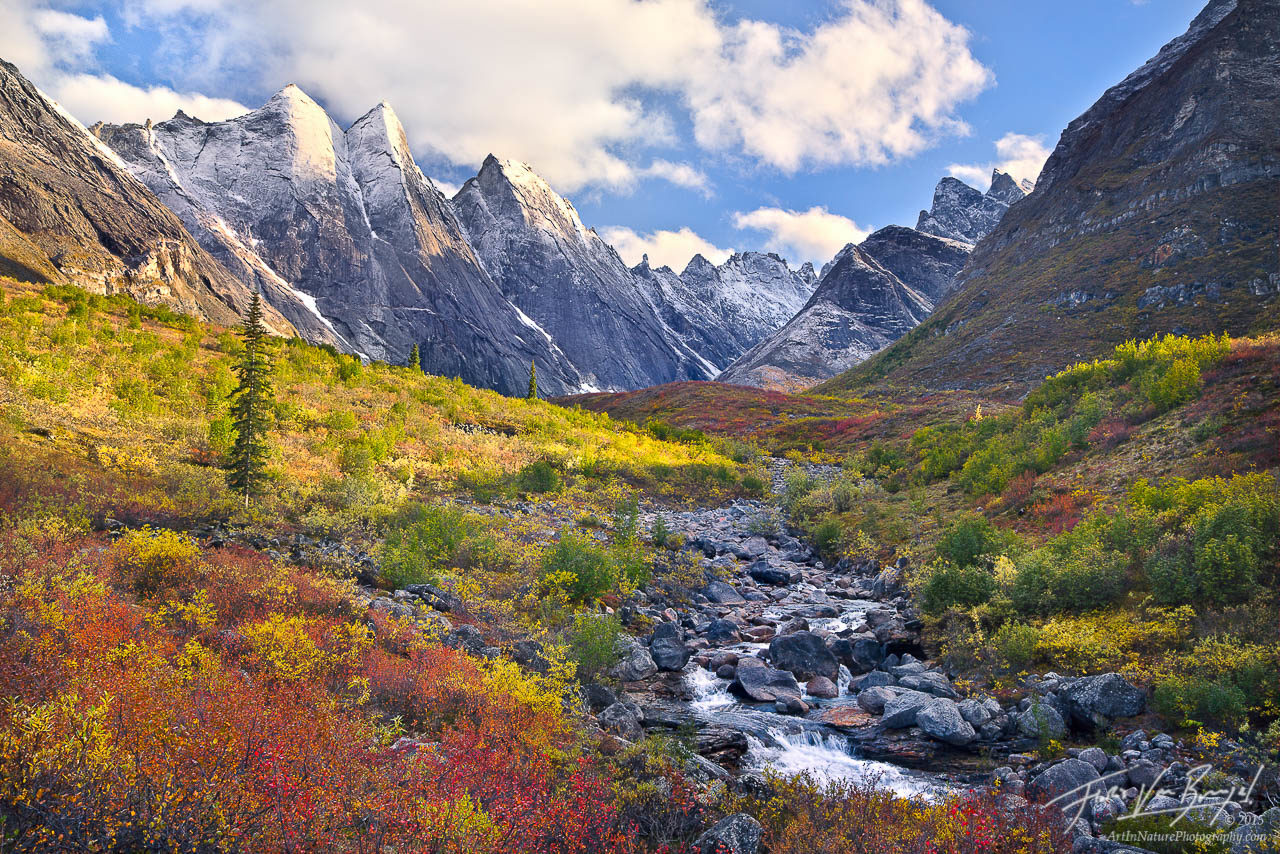
© Floris Van BreugelArrigetch Peaks, Alaska
We often see images depicting wilderness landscapes, but what do those places sound like? Among the hours and days of remote sound recordings they've collected in Alaska's Arrigetch Basin, researchers Davyd Betchkal and Dan Walsh with the National Park Service have uncovered gems like this duet between a golden-crowned sparrow and an American robin.
The researchers, who are part of the Natural Sounds and Night Skies Division in the Park Service's wilderness program in Alaska, recorded another spike in sound after a thunderstorm passed through the region. A Lapland longspur bounced through the audial frame, singing a song to reclaim its territory after the chaos of the storm.
Recording devices can't be air-dropped into remote locations. Instead, in order to document the wind, water, animals and rockslides of these places, Betchkal and Walsh fly in and hike to their target areas, where they set up devices that will record sound for two months. Two sets of data are gathered: the natural soundtrack, and human-generated noise like passing aircraft.
The scientists have captured over 80,000 instances of human noises in natural spaces. Information on the duration, timing and amplitude of audible human disruptions to the wilderness soundscape provide a baseline from which to measure change.
The recordings show that these spaces are often free from human-generated noise for hours before a jet flies overhead or hikers cross a distant ridge.
In Arrigetch Basin, the location where Betchkal and Walsh found the least amount of unnatural noise, 6 hours typically passed between bouts of human-created sounds.Photographer Seth Adams joined the researchers on trips to two locations in Gates of the Arctic National Park and Preserve in June: Lake Omelaktavik, in the Noatak River Valley, and Arrigetch Creek, in the Arrigetch Peaks. His images reveal the dedication necessary to record the baseline levels of sound in Alaska's wilderness. As Anchorage becomes busier — it's the fourth largest air cargo port in the United States — it's likely that the quiet solace of the natural landscape won't last. Avian choruses, like this one made up of a Wilson's snipe, American tree sparrow and Savannah sparrow, will be joined more and more often by the sound of air freighters.

Reader Comments
to our Newsletter